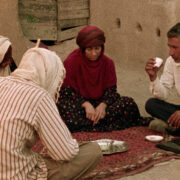EMPEROR OF THE NORTH: The Hobo In Early 20th Century America
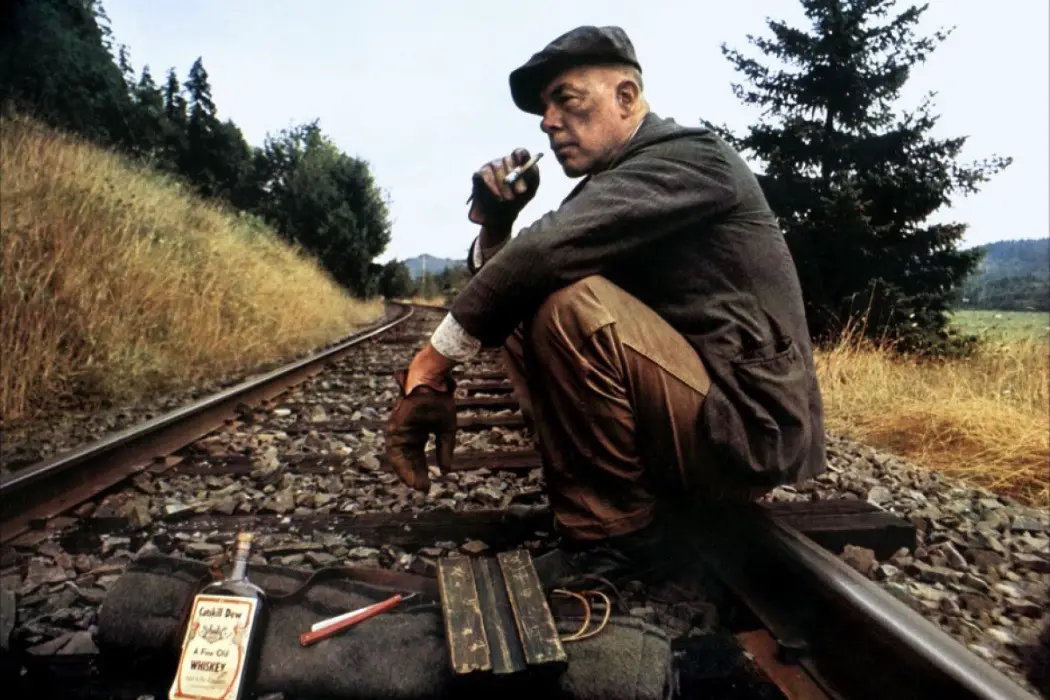
Madeline Hrabik is a writer, film buff, and amateur historian…
With careful attention to detail, Robert Aldrich’s 1973 film Emperor of the North shows us the world of the hobo, the homeless man who train-hopped across the country from after the Civil War into the first few decades of the 20th century. Loosely based on Leon Ray Livingston’s (aka A-No.1) 1917 book From Coast to Coast with Jack London, which chronicles the famed hobo’s cross-continental journey with the beloved author, as well as Jack London’s memoir The Road, which tells of his own time as a hobo, the Depression-era movie reproduces the unique counterculture of the hobo, known as “hobohemia.”
In the film, we see everything from a horde of hobos down at the “jungle” (camp) eating Mulligan stew (a hodgepodge stew of whatever’s available – cabbage, carrots, potatoes, salt), to the tips and tricks of catching a train, to all the richness of hobo jargon.
Hobohemia on the Big Screen
One hobo convention utilized in the movie is the “monica,” that is, moniker, a hobo’s nickname on the road. The movie’s two main characters, known exclusively by their monikers and loosely based off of Leon Ray Livingston and Jack London, are, respectively: A-No.1, the older, more experienced hobo, portrayed by Lee Marvin, and Cigaret, the younger, more amateur hobo, portrayed by Keith Carradine (To clarify, Cigaret is not actually meant to be London in Emperor of the North, though A-No.1 might as well be the real A-No.1, since Livingston’s fame, legacy, and even authorship were under his famous monica – he’s somewhat timeless). It would have been typical for hobos to only use their monikers, keeping their real names close to their hearts.
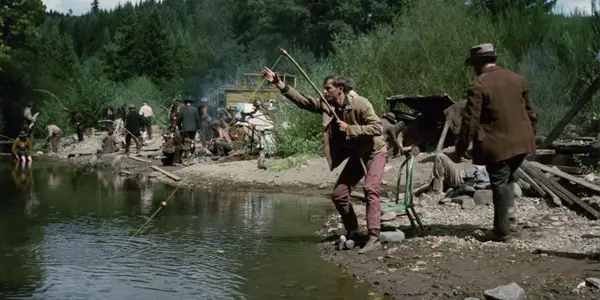
In Emperor of the North, we also see hobo monikers on the water tower, where hobos would often write their monikers, along with the date and their travel plans, e.g. “Pittsburgh Joe B.E. 12-1-13” (Pittsburgh Joe, bound east on December 1, 1913). The result was that water towers would serve as a kind of directory for hobos, allowing them to track each other down. In the film, one particular hobo at the railroad junction has been designated with writing this form of hobo graffiti on the water tower, so when A-No.1 decides to catch the #19 again, that hobo writes on the water tower: “A-No.1 to Portland on ‘19’ 10-24-33.” Incredibly, an anthropologist recently discovered the real A-No.1’s hobo graffiti under a bridge in L.A.!
But being on the road is not all monikers and Mulligan stew, and the film is keen to focus on one of the hobo’s greatest adversaries: the train crew, particularly the brakeman (aka the “shack”), who were tasked with “ditching” freeloading hobos off the train. In the books, A-No.1 and London encounter a number of cruel shacks, but none compare to the film’s Shack, the king of all shacks.
Shack in the movie (Ernest Borgnine), known only as such, is a vicious, sadistic bully feared by hobos and railroad workers alike. He takes vindictive pleasure in kicking ‘bos off his train, even if that means their death – in fact, in the very first scene of the movie, Shack hits a hobo riding his train on the head with a hammer, sending him to his death beneath the wheels of the train. Next, we see the poor ‘bo split in half along the tracks. Emperor of the North doesn’t cut corners in showing the brutality of the Road.
Hobo Masculinity
Yet one aspect of hobohemia that Emperor of the North distorts is the hobo’s masculine ideals, namely, camaraderie between hobos. In the hobo’s all-male world, divorced from the “feminized” spheres of society and domesticity, such brotherly love was considered masculine, a way for the hobo to reinforce his sense of masculinity. This was in addition to other hobo masculine ideals such as physical strength, independence, dirty language, and of course, the ability to catch a train.
Whereas in real life, as described in From Coast to Coast, A-No.1 and London became “rovers” (traveling companions) and good friends, in Emperor of the North, Cigaret’s character is radically changed from cheerful and peppy to aggressive and caustic, with the result of making his relationship with A-No.1 little more than a hostile acquaintanceship.
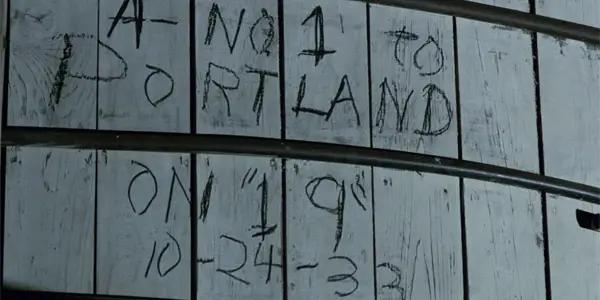
In doing away with hobo brotherhood, the film actually replaces it with the more contemporary masculine ideals of antagonism and competition between men. From their very first meeting, Cigaret aggressively tries to prove his masculinity to A-No.1, proudly claiming that he killed a ‘bo named Hee-Haw Mike in Texas. He wants A-No.1 to know he’s someone to fear. But the older, wiser A-No.1 shoots him down, harshly informing him that Hee-Haw Mike was killed in San Francisco, “shot full of holes by nobody knows.” Similar scenes repeat throughout the movie, with Cigaret telling tall-tales to build up an idealized masculine image of himself, only to have the truth exposed. His masculinity is a sham, in stark contrast to the stoic and composed A-No.1, a real “profesh” (experienced hobo) with years of wisdom and knowledge under his belt.
But even though the way Emperor of the North depicts masculinity may be more familiar to a general audience, I am of the belief that by removing hobo friendship, the film robs itself of heart. There’s no real human connection in the film; there’s only the vicious rivalry between Shack and A-No.1/Cigaret and the bickering between Cigaret and A-No.1. This is especially sad considering the real A-No.1 wrote From Coast to Coast in 1917 as a homage to his recently deceased friend, who he held in great esteem and affection, saying that, “Of all the good fellows I’ve met, he was the best one.” It’s clear from reading the novel that A-No.1 deeply cherished his days riding the rails with London.
Rovers Riding the Rods
If Emperor of the North had instead preserved A-No.1 and London’s friendship as it is in From Coast to Coast, then not only would the nebulous, often needless conflict between Cigaret and A-No.1 be cleared up, but the film would have been more emotionally impactful overall.
An example of this would be in the first of two nearly-identical scenes in the movie, lifted almost directly from From Coast to Coast, where A-No.1 and Cigaret are “riding the rods,” that is, clinging to the heavy iron rods (gunnels) beneath a car, a very dangerous way to ride a train. And it proves to be dangerous indeed: Shack, who’s standing up on the coupler (device that connects the train cars), takes a steel coupler pin (metal rod used in the antiquated link-and-pin couplers) and attaches it to a rope, threading it down below the car so the pin will hit the two hobos.
The hard, fast-moving pin hits Cigaret over and over. He cries out in pain while A-No.1 watches, occasionally wincing. Eventually, A-No.1 manages to grab the rope the pin is attached to and loops it around the rod on the side of the car. Then, A-No.1 gruffly tries to help the frantic Cigaret out from under the rods and up to the top of the car, not so much because he cares about Cigaret as a person, but because under the rods they’re vulnerable to Shack’s antics and to being apprehended at the next stop. Worse yet, A-No.1 even mocks Cigaret for his fearful reluctance to climb out from under the rods, saying, “Old Hee-Haw Mike never taught you to ride down trains, did he?”
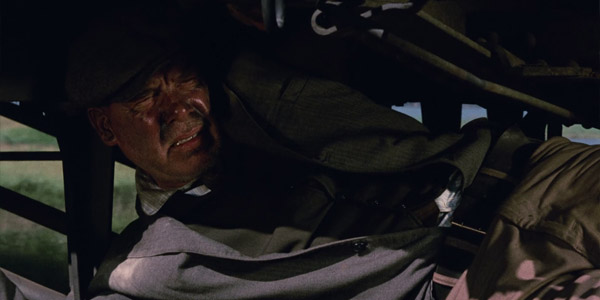
This scene isn’t anywhere near as nerve-wracking as it is in the book because A-No.1 and Cigaret aren’t friends. On the other hand, in From Coast to Coast, A-No.1 relays his terror upon realizing the danger they’re in, made all the worse since London is immobilized by fear. To save London from the pin, A-No.1’s only option is to grab his friend and throw him off the train and down a grassy hill. It’s a high-intensity moment because they care about each other.
The Hobo in Emperor of the North: Conclusion
While Emperor of the North accurately portrays the unique subculture of the hobo in many ways, it also does itself a disservice by removing friendship between hobos, a central aspect of hobohemia. It leads me to wonder, would it have really been so bad for an action-adventure flick to have a friendship between two men be central to the plot? Were the creators of the film fearful of possible homosexual implications? It’s hard to say. What I do know is that it would be wonderful to one day see a film that focuses on A-No.1 and Jack London’s friendship as they traveled the country together in the 1890s.
What do you think? Do the hobo customs and jargon add to Emperor of the North or take away from it? Does the relationship between A-No.1 and Cigaret work for the movie, or not? Tell us your thoughts in the comments below!
Does content like this matter to you?
Become a Member and support film journalism. Unlock access to all of Film Inquiry`s great articles. Join a community of like-minded readers who are passionate about cinema - get access to our private members Network, give back to independent filmmakers, and more.
Madeline Hrabik is a writer, film buff, and amateur historian from Pittsburgh, Pennsylvania. She is particularly interested in silent film, historical films, and the Golden Age of Mexican Cinema.









